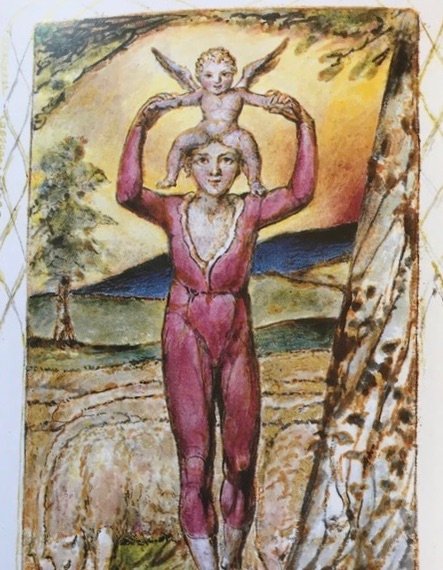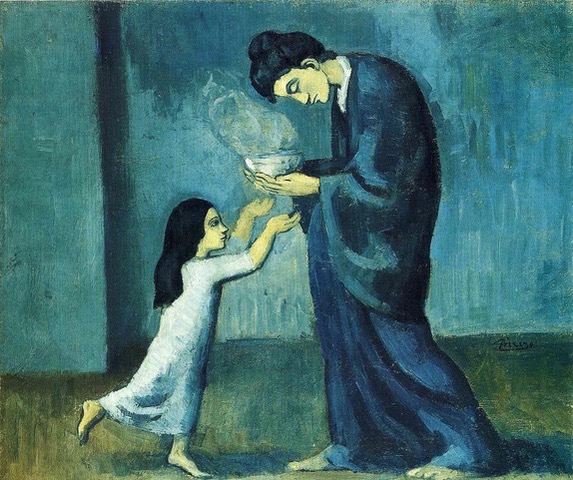"Le conte de fées est la pierre de touche de la poésie [...] tout ce qui est poétique doit ressembler à un conte de fées. Le poète vénère le hasard".
- Novalis
"Le conte de fées est plus puissant que la philosophie.
- Bruce Donehower, d'après Novalis
Cette vidéo de 20 minutes est tirée d'une réunion de la Section des arts littéraires et des sciences humaines qui s'est tenue le 20 novembre 2020. Au bas de l'article se trouvent des vidéos de représentation en anglais et en allemand du conte "Hyacinth and Rosebud" de Novalis.
Novalis avait une grande estime pour les contes de fées. Une grande partie de ce que Novalis dit sur l'importance spirituelle des contes de fées est reprise par Rudolf Steiner cent ans ou plus après la mort de Novalis. Cela correspond tout à fait à l'importance extrême que Rudolf Steiner a accordée à Novalis, par exemple dans le Dernier discours.
L'une des affirmations les plus frappantes de Rudolf Steiner à propos du conte de fées est la suivante "Les contes de fées peuvent aider à lutter contre les maladies. Nous trouvons cette déclaration dans le livre Le monde des contes de féesqui est présenté dans la section Livres de ce site.
Version anglaise :
Hyacinthe et bouton de rose par Novalis
Version allemande :
Hyazinthes et Rosenblütchen de Novalis
"Dans un véritable conte de fées, tout doit être miraculeux, mystérieux et interdépendant ; tout doit être vivant, chacun à sa manière. L'ensemble de la nature doit être merveilleusement mélangé à l'ensemble du monde de l'esprit. Dans le conte de fées, les liens entre l'anarchie, l'anarchie, la liberté, l'état naturel de la nature se font sentir dans le monde ... . Le monde du conte de fées est un monde qui s'oppose de bout en bout à un monde de vérité rationnelle, et c'est précisément pour cette raison qu'il est si parfaitement analogue à un monde de vérité rationnelle, que le Chaos est analogue à la Création achevée".
- Novalis

"Pauvre enfant, qui n'a pas encore aimé !"
L'image ci-dessus est de William Blake. Contemplez-la un instant. (Blake et Novalis ont beaucoup en commun - ils étaient contemporains.) Contemplez cette image et imaginez que vous portez sur vos épaules un enfant tel que celui-ci. L'enfant est-il heureux ? Triste ? Effrayé ? Inquiet ? En colère ? Malade ? L'enfant fait-il une crise, ou peut-être a-t-il peur du monde ?
J'ai toujours été fasciné par une remarque faite par Novalis dans lequel Novalis dit que le livre de Goethe Conte de fées [Le serpent vert et le beau lys] est "Opéra narré." Non pas l'opéra dans une forme musicale totale, mais l'opéra narré, dit Novalis. Un opéra parlé. Habituellement, lorsque je dis à mes amis musiciens que je réalise des vidéos de contes de fées avec des artistes de la parole à Fair Oaks - de minuscules "opéras narrés" - ils sourient et disent : "Oh, bien ! Je les donnerai à mes petits-enfants". Mais ces petits opéras narrés sont pour les adultes ! Comme Novalis et Rudolf Steiner l'ont souligné, chaque adulte a besoin d'entendre un vrai conte de fées de la bonne manière ! Chaque adulte a un enfant en lui, comme l'a souligné Steiner - un enfant qui a besoin d'entendre le vrai conte de fées, à plusieurs reprises. Mais peut-être que l'adulte ne laisse pas l'enfant écouter de telles histoires. Oh là là ! Quelle tristesse ! L'adulte préférerait expliquer les significations cachées du conte, dire des choses sages ou enseigner des leçons, mais l'enfant ne veut que profiter d'un opéra raconté.
"Göthes Märchen ist eine erzählte Oper."
- Novalis
"Il y a une grande différence selon que l'on a grandi ou non avec des contes de fées. Ce n'est que plus tard que l'on s'aperçoit que les images des contes de fées font vibrer l'âme. Si l'on n'a pas reçu de contes de fées, cela se manifeste plus tard par de la lassitude, de l'ennui. Cela peut même s'exprimer physiquement : les contes de fées peuvent aider à lutter contre les maladies. Ce qui est absorbé peu à peu par les contes de fées se manifeste ensuite par la joie de vivre, par le sens de la vie, par la capacité à faire face à la vie, même dans la vieillesse. Les enfants doivent faire l'expérience de la force inhérente aux contes de fées lorsqu'ils sont encore jeunes et qu'ils peuvent encore le faire. Celui qui n'est pas capable de vivre avec des idées qui n'ont pas de réalité sur le plan physique, "meurt" pour le monde spirituel.
- Rudolf Steiner

